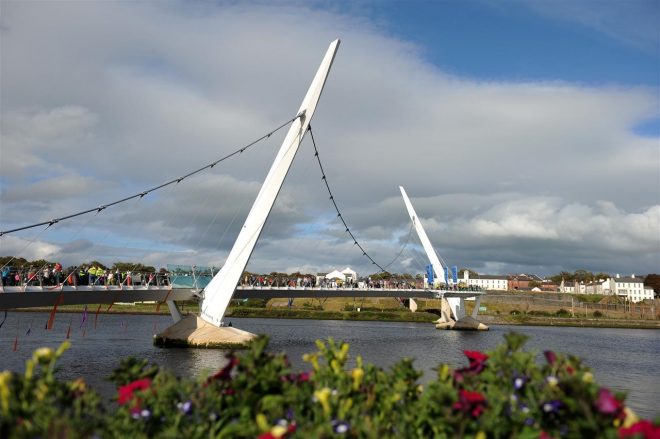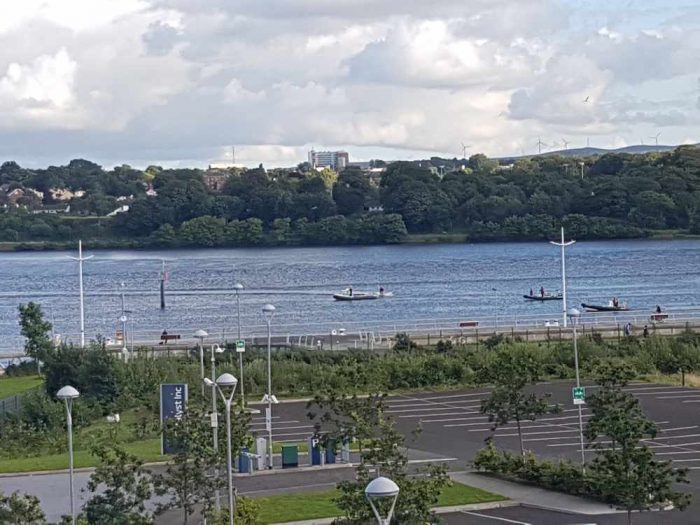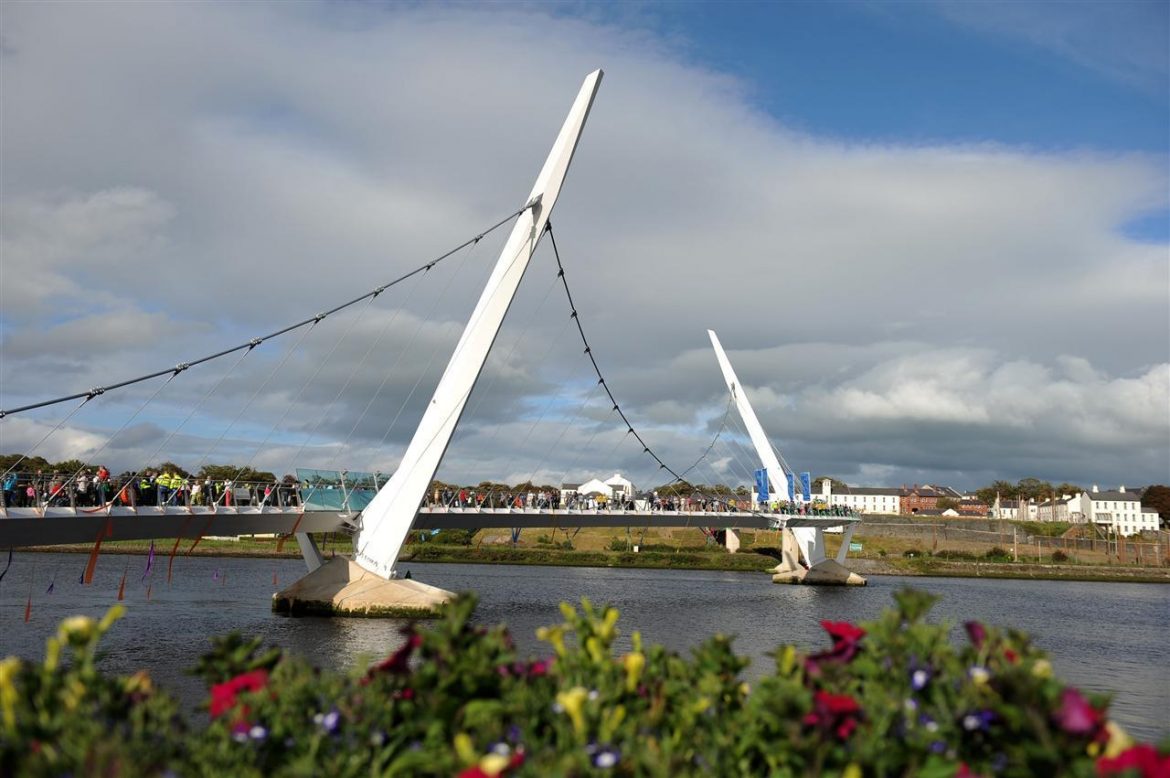 OUR Future Foyle’ is a community driven public stakeholder regeneration project with the research and design having been undertaken by the Helen Hamlyn Centre for Design at the Royal College of Art. Its aim is to improve the health and wellbeing of the people of Derry through cultural activity on the banks and bridges of the River Foyle.
OUR Future Foyle’ is a community driven public stakeholder regeneration project with the research and design having been undertaken by the Helen Hamlyn Centre for Design at the Royal College of Art. Its aim is to improve the health and wellbeing of the people of Derry through cultural activity on the banks and bridges of the River Foyle.The project looks to deliver 5 key social and cultural interventions along the riverfront by 2020 that will re-imagine the space with arts, leisure, design and technology activities.
Over the bank holiday weekend and the last week of May, Our Future Foyle hosted a series of pop-up interactive art installations along the Peace Bridge in the city designed by architectural students from Queens University Belfast.
The installations prompted engagement from the public through tactile, visual and aural stimulus – with sounds played from the likes of Ulster Orchestra, Cornerstone Church and local band Foreign Owl alongside recordings of some of the shirt factory ladies sharing tales of the city.
Over 15,000 people crossed the bridge over 4 days – with a sample showing 80% of those stopping and engaging with the installations in some form.
The level of public interaction within a weekend can be compared to the same footfall of contemporary gallery’s annually and raises the question should we be taking more exhibitions and interactive art to our streets and urban spaces.
These playful and interactive pop-ups are in fact part of a study to inform a much larger long-term proposed sculpture park of over 20 high profile artists’ interactive sculptures to be placed along the Foyle banks and bridges connecting the riverfront with lighting, sounds and playful art as a considerable landmark to attract local community but also tourists to utilise the river as an attraction.
As part of the Project the team formed a collaboration with local architect Shane Birney and the department of architecture at Queens University Belfast lead by Dr. Nuala Flood, with support from Mr. Niek Turner, Dr. Jasna Mariotti and Dr. Sarah Lappin, to create pop up installations as a student design competition.
One of the installations, Finding Foyle, produced sound and community artwork connected to the balustrades of the bridge creating an exhibition out in the public walkways and connecting people with local work raising awareness around mental health.
Another installation, ‘Pipe Down and Listen’, saw a wind tunnel that looked like a hedgehog sit alongside the Ebrington walls in which people could walk through and play, creating their own sounds, whilst ‘Tessellate’ saw a series of triangles created to form a busker’s stage in which local performers played to passers-by.
The pop ups were built as part of a larger public realm workshop called ‘Architecture of Change’ being hosted by The Void Gallery from May to July.
Ralf Alwani of Our Future Foyle said: “Playful pop-ups that capture the best of cultural activity and community architecture were on display for the city to engage with at the riverfront.
“The aim of these interactive sculptures is to tackle negativity and isolation around the river creating positive presence at all hours around the bridges and banks.”
Foyle MP Elisha McCallion said: “There is a vision for the river to become somewhat of a tourist attraction and animated space in relation to Our Future Foyle it looks at the issues that affect the mental health of young people and how they view of the Foyle in a way that has never been done before in the city.
“It looks to branch out and use the asset that is the Foyle in a more positive nature, this event is another stepping stone to achieve that vision.”
Other projects proposed from Our Future Foyle such as the Foyle Bubbles will see 42 pop up pods occupy the river with retail and community uses while the occupiers will be trained in mental health education to benefit the public.
 The team are set to launch the largest proposed art installation in Northern Ireland creating a landmark known as the Foyle Reeds for the Foyle bridge this year. Proposals have been developed with the community since 2016 through a series of events and workshops that have engaged directly with over 4000 people from the city.
The team are set to launch the largest proposed art installation in Northern Ireland creating a landmark known as the Foyle Reeds for the Foyle bridge this year. Proposals have been developed with the community since 2016 through a series of events and workshops that have engaged directly with over 4000 people from the city.
Mayor of Derry City and Strabane District, Councillor Maolíosa McHugh, said: “I Believe Our Future Foyle is a legacy project of City of Culture 2013, conveying the belief that if we occupy and animate our public space by cultural intervention and programming, we create a safe shared space that benefits the wellbeing of all of our citizens and visitors.”
The city’s Nerve Centre Fablab cut all of the exhibition elements by CNC machine while local joinery company Love Wood and co donated the timber.
The team would also like to thank Queen’s University Students and Local companies which sponsored or gave In-kind support to make the event happen; Aligned, Ali and Laura Photography, City Centre Initiative, Benchmark Construction, Chris Quinn Architects, Derry Precision Tools, First Class Builders and Leadon Timber frame.
More information about the project can be found at futurefoyle.org
Tags:





